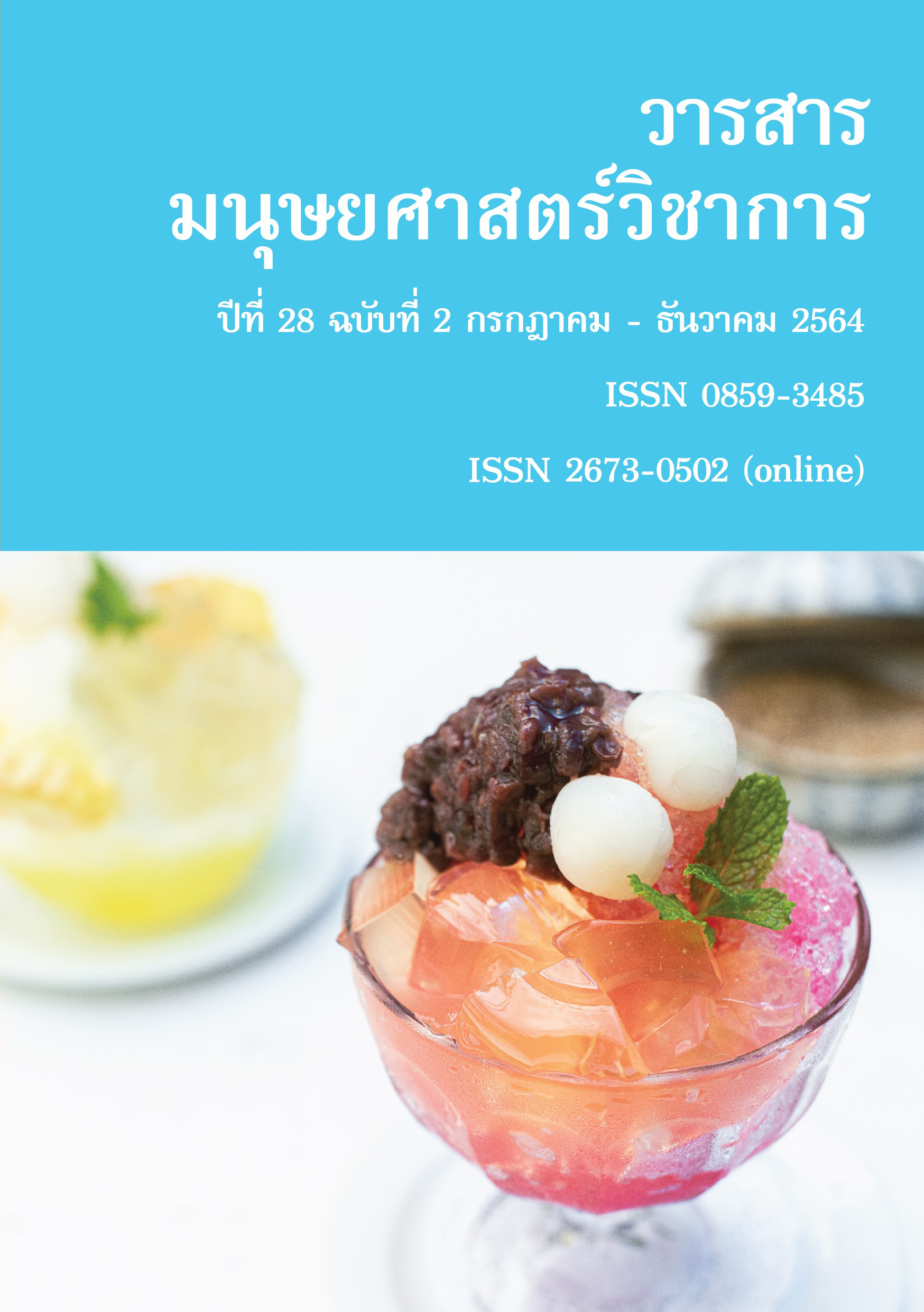ความคาดหวังและการรับรู้ของผู้ใช้บริการต่อคุณภาพเว็บไซต์ของสำนักหอสมุดมหาวิทยาลัยเกษตรศาสตร์
Main Article Content
บทคัดย่อ
การวิจัยครั้งนี้มีวัตถุประสงค์เพื่อศึกษาพฤติกรรมการใช้เว็บไซต์ ระดับความคาดหวังและการรับรู้ของผู้ใช้บริการต่อคุณภาพเว็บไซต์ของสำนักหอสมุดมหาวิทยาลัยเกษตรศาสตร์ ความแตกต่างของความคาดหวังและการรับรู้ของผู้ใช้บริการต่อคุณภาพเว็บไซต์ของสำนักหอสมุดมหาวิทยาลัยเกษตรศาสตร์ จำแนกตามสถานภาพของผู้ใช้บริการ และเปรียบเทียบความแตกต่างระหว่างความคาดหวังและการรับรู้ของผู้ใช้บริการต่อคุณภาพเว็บไซต์ของสำนักหอสมุดมหาวิทยาลัยเกษตรศาสตร์ เป็นการศึกษาวิจัยเชิงสำรวจ รวบรวมข้อมูลด้วยแบบสอบถาม จำนวน 396 ชุด วิเคราะห์ข้อมูลโดยใช้สถิติเชิงพรรณนา ได้แก่ ค่าความถี่ ร้อยละ ค่าเฉลี่ย ส่วนเบี่ยงเบนมาตรฐาน และใช้สถิติเชิงอนุมาน ได้แก่ การทดสอบความแตกต่างของค่าเฉลี่ย t-test, F-test (One-way ANOVA) และ Least Significant Difference (LSD) โดยกำหนดระดับนัยสำคัญทางสถิติที่ระดับ 0.05
ผลการวิจัยพบว่า กลุ่มตัวอย่างส่วนใหญ่เป็นนิสิตระดับปริญญาตรี มีวัตถุประสงค์ในการใช้เว็บไซต์เพื่อค้นหาทรัพยากรสารสนเทศของห้องสมุด ช่วงเวลาที่ใช้ 12.01-16.00 น. มีความถี่ในการสืบค้นเว็บไซต์ คือ 1-2 ครั้ง/สัปดาห์ สืบค้นจากบ้าน/หอพัก สืบค้นด้วยโทรศัพท์สมาร์ทโฟน และบริการที่สืบค้นจากเว็บไซต์ คือ บริการฐานข้อมูลที่ห้องสมุดจัดทำขึ้น ความคาดหวังของผู้ใช้บริการต่อคุณภาพเว็บไซต์โดยรวมอยู่ในระดับมาก เมื่อพิจารณาความคาดหวังเป็นรายด้าน พบว่า ความคาดหวังระดับมากที่สุด คือ ด้านการใช้งาน และด้านการให้บริการ ส่วนการรับรู้ของผู้ใช้บริการต่อคุณภาพเว็บไซต์โดยรวมอยู่ในระดับมาก เมื่อพิจารณาการรับรู้เป็นรายด้าน พบว่า มีการรับรู้ในระดับมาก คือ ด้านการให้บริการ ด้านการใช้งาน และด้านการออกแบบเว็บไซต์ ส่วนความแตกต่างของความคาดหวังและการรับรู้ของผู้ใช้บริการต่อคุณภาพเว็บไซต์ของสำนักหอสมุดมหาวิทยาลัยเกษตรศาสตร์ จำแนกตามสถานภาพ พบว่า ผู้ใช้บริการที่มีสถานภาพแตกต่างกันมีความคาดหวังต่อคุณภาพเว็บไซต์ของสำนักหอสมุดมหาวิทยาลัยเกษตรศาสตร์ไม่แตกต่างกัน อย่างมีนัยสำคัญทางสถิติที่ระดับ 0.05 และผู้ใช้บริการที่มีสถานภาพแตกต่างกันมีการรับรู้ต่อคุณภาพเว็บไซต์ของสำนักหอสมุดมหาวิทยาลัยเกษตรศาสตร์แตกต่างกัน อย่างมีนัยสำคัญทางสถิติที่ระดับ 0.05 เมื่อเปรียบเทียบความแตกต่างระหว่างความคาดหวังและการรับรู้ของผู้ใช้บริการต่อคุณภาพเว็บไซต์ของสำนักหอสมุด พบว่า มีความแตกต่างกันอย่างมีนัยสำคัญทางสถิติที่ระดับ 0.05
Article Details
เอกสารอ้างอิง
กองการเจ้าหน้าที่. (2563). สถิติบุคลากรรายเดือน ประจำปี 2563. สืบค้นเมื่อ 21 เมษายน 2563. จาก http://www.person.ku.ac.th/new_personweb/stat
กิตติพศ ทูปิยะ. (2560). พฤติกรรมการใช้อินเทอร์เน็ตและสารสนเทศของนิสิตมหาวิทยาลัยบูรพา. (วิทยานิพนธ์ปริญญามหาบัณฑิต สาขาการจัดการภาครัฐและเอกชน). มหาวิทยาลัยบูรพา, ชลบุรี.
จำเนียร ช่วงโชติ. (2532). จิตวิทยากับการรับรู้และเรียนรู้. กรุงเทพฯ: มหาวิทยาลัยรามคำแหง.
ชลิตา คำหอม (2562). การใช้ฐานข้อมูลที่ให้บริการในสำนักวิทยบริการและเทคโนโลยีสารสนเทศของอาจารย์และนักศึกษา มหาวิทยาลัยราชภัฏสุรินทร์. วารสารบรรณศาสตร์ มศว, 12(2), 1-14.
ธนวรรธ ตั้งสินทรัพย์ศิริ. (2550). Organizational Behavior. กรุงเทพฯ: ม.ป.พ.
ธันยพร เปรมปรี, สาสินี มีเจริญ และทักษ์ ทองภูเบศร์. (2561). การใช้ LibQUAL +TM ประเมินคุณภาพการให้บริการของห้องสมุด สถาบันอาศรมศิลป์. วารสารบรรณศาสตร์ มศว, 11(1), 141-158.
นงราม เหมือนฤทธิ์, วสุ เชาว์พานนท์ และลำปาง แม่นมาตย์. (2556). การวิเคราะห์สภาพปัจจุบันของแหล่งสารสนเทศวิจัยออนไลน์ในประเทศไทย. วารสารวิจัย มข, 13(4), 73-86.
บุญส่ง โพธิ์ศรี. (2547). เทคโนโลยีสารสนเทศเบื้องต้น. กรุงเทพฯ: ศูนย์ส่งเสริมอาชีวะ.
ปรมะ สตะเวทิน. (2540). หลักนิเทศศาสตร์. กรุงเทพฯ: ห้างหุ้นส่วนจำกัดภาพพิมพ์.
พัชราภรณ์ หงส์สิบสอง และนันทา เติมสมบัติถาวร. (2557). พฤติกรรมการค้นคว้าข้อมูลบนเครือข่ายอินเทอร์เน็ต กรณีศึกษา: นักศึกษามหาวิทยาลัยเทคโนโลยีราชมงคลล้านนา เขตพื้นที่น่าน. PULINET Journal, 1(2), 14-20.
ภาวสุ สิริสิงห. (2555). ความคาดหวังและการรับรู้ของผู้ใช้บริการที่มีต่อคุณภาพการให้บริการของห้องสมุดมารวย ตลาดหลักทรัพย์แห่งประเทศไทย. (วิทยานิพนธ์มหาบัณฑิต สาขาการตลาด), มหาวิทยาลัยธรรมศาสตร์, กรุงเทพฯ.
วราพรรณ อภิศุภะโชค. (2559). พฤติกรรมการใช้และการประเมินเว็บไซต์ของนิสิตระดับปริญญาตรี มหาวิทยาลัยเกษตรศาสตร์. วารสารสุทธิปริทัศน์, 30 (พิเศษ), 213-226.
วีระรัตน์ กิจเลิศไพโรจน์. (2547). การตลาดธุรกิจบริการ. กรุงเทพฯ: ซีเอ็ดยูเคชั่น.
สกาวเดือน ปธนสมิทธิ์. (2540). ปัจจัยที่มีอิทธิพลต่อการยอมรับการรื้อปรับระบบของพนักงานธนาคาร. (วิทยานิพนธ์ปริญญามหาบัณฑิต สาขาจิตวิทยาอุตสาหกรรม). มหาวิทยาลัยเกษตรศาสตร์, กรุงเทพฯ.
สุรีย์วรรณ สรรพสิงห์, ธนพรรณ กุลจันทร์, และอังสนา ธงไชย. (2560).
การประเมินคุณภาพบริการอิเล็กทรอนิกส์ สำนักหอสมุด มหาวิทยาลัย เชียงใหม่. วารสารวิจัยสมาคมห้องสมุดแห่งประเทศไทย, 10(1), 85-99.
สำนักงานพัฒนาธุรกรรมทางอิเล็กทรอนิกส์. (2563). พฤติกรรมผู้ใช้อินเทอร์เน็ตในประเทศไทย ปี 2562. https://www.twfdigital.com/blog/2020/04/thailand-internet-user-profile-2019/
สำนักทะเบียนและประมวลผล. (2563). จำนวนนิสิตปัจจุบัน มหาวิทยาลัยเกษตรศาสตร์. สืบค้นเมื่อ 21 เมษายน 2563. จาก http://www.regis.ku.ac.th/cpcmns/rpt_std_ku3.php
Alasem, A. N. (2013). Evaluating the Usability of Saudi Digital Library’s Interface. Retrieved December 3, 2019, from http://www.iaeng.org/publication/WCECS2013/WCECS2013_pp178-181.pdf
Arms, W. (2000). Digital Libraries. Retrieved December 3, 2019, from http://www.cs.cornell.edu/wya/DigLib/Ms1999/Chapter1.html
Benbunan-Fich, R. (2001). Using protocol analysis to evaluate the usability of a commercial website. Information and Management, 39, 151-163.
Bhattacharjee, N. (2014). Web Searching Behavior: A case study among the library users of Silchar Medical College. Retrieved January, 25, 2020, from https://www.researchgate.net/publication/285594751
Einasto, O. (2014). E-service Quality Criteria in University Library: A Focus Group Study. Prociedia-Social and Behavioral Science, 147(2), 561-566.
International Organization for Standardization. (1998). ISO 9241-11: Ergonomic requirements for office work with visual display terminals (VDTs) - Part 11 Guidance on usability. Retrieved December 3, 2019, from http://www.iso.org/iso/catalogue_detail.htm?csnumber=16883
International Organization for Standardization. (2011). ISO/IEC 25010:2011(en). Retrieved December 3, 2019, from https://www.iso.org/obp/ui/#iso:std:iso-iec:25010:ed-1:v1:en
Jagero, N. et al. (2014). An Assessment of the Usability of the Africa University Digital Library, Mutare, Zimbabwe. Retrieved December 3, 2019, from http://www.ijettcs.org/Volume3Issue6/IJETTCS-2014-12-06-92.pdf
Jeng, J. (2005). What is Usability in the Context of the Digital Library and How Can It be Measured. Information Technology and Libraries, 24(2), 47-56.
Joo, S & Lee, J. L. (2011). Measuring the Usability of Academic Digital Libraries: Instrument Development and Validation. The Electronic Library, 29(4), 523-537.
Kotler, P. & Keller, K. L. (2009). Marketing Management. New Jersey: Prentice-Hall.
Loiacono, E. T., Watson, R. T. & Goodhue, D. L. (2002). WebQUAL: A Measure of Website Quality. American Marketing Association. Retrieved December 3, 2019, from https://users.wpi.edu/~eloiacon/WebQual/AMAPaper.pdf
Parasuraman, A., Zeithaml, V. A., & Malhotra, A. (2005). E-SERVQUAL: A multiple-item scale for assessing electronic service quality. Journal of Service Research, 7, 1-21.
Paul, P. et al. (2006). The Impact of Cultural Values on Marketing Ethical Norms: A Study in India and the United States. Journal of International Marketing, 14(4) 28-56.
Reynolds, J. (2000). The Complete E-commerce Book: Design, Build and Maintain Successful Web-based Business. New York: CMP-Books.
Spool, J. M, et al. (1999). Website Usability: A designer’s guide. San Francisco: Morgan Kaufmann.
Yoo, B., & Donthu, N. (2001). Developing a Scale to Measure the Perceived Quality of an Internet Shopping Site (SITEQUAL). Quarterly journal of electronic commerce, 2(1), 31-45.
Zeithamal, V., Parasuraman, A. & Berry. L. (1990). Delivering Quality Service-Balancing Customer Perceptions and Expectations. New York: The Free Press.


